Mushroom Monday - WHAT I FOUND ON THIS COLD DECEMBER MORNING
After a bit of driving, forty kilometers or so, I arrived at the forest where the following photographs were taken.
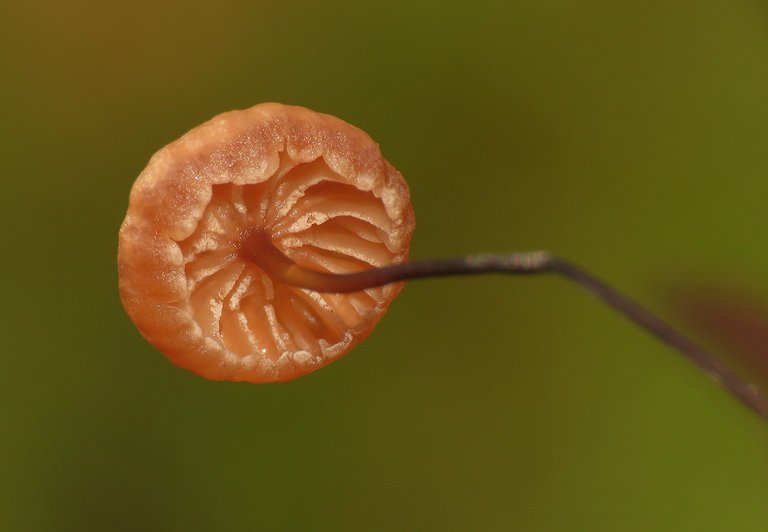
This is the small Marasmius siccus mushroom, seen through a macro lens. I found it among the fallen leaves ...
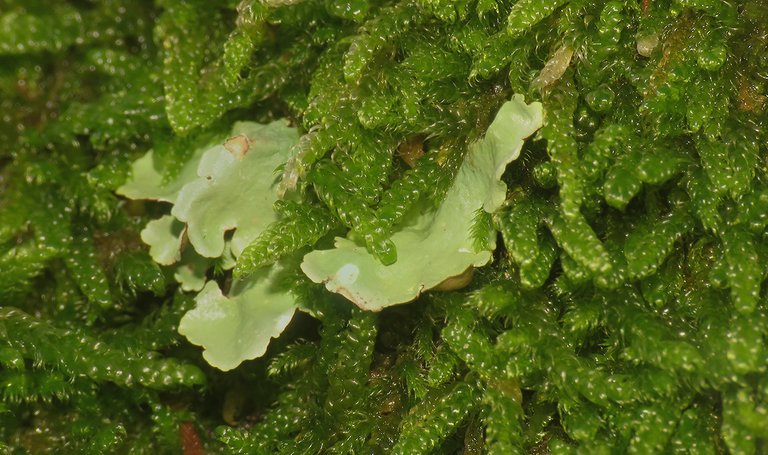
... scattered around the trunk of the tree, covered with moss ...
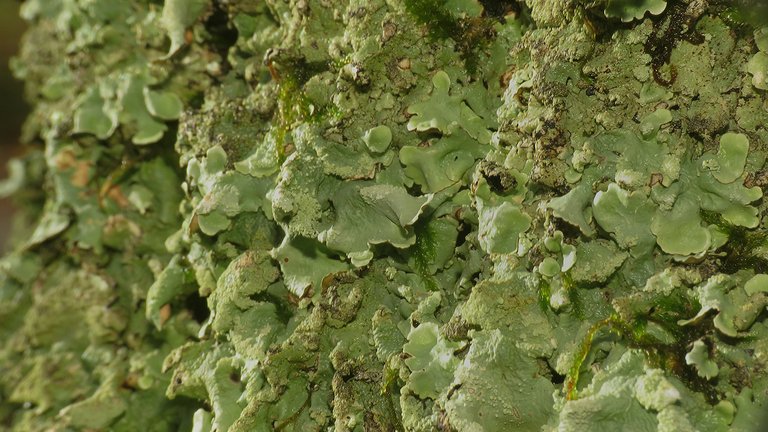
... and lichens. I can't tell you the exact species of the moss, but the lichen is Flavoparmelia caperata, commonly known as the Common green shield lichen. Like all lichens, this is a composite organism. The Flavoparmelia caperata is formed by cyanobacteria living among fungal filaments. This is some kind of colony made of bacteria and fungi living in a mutualistic relationship.
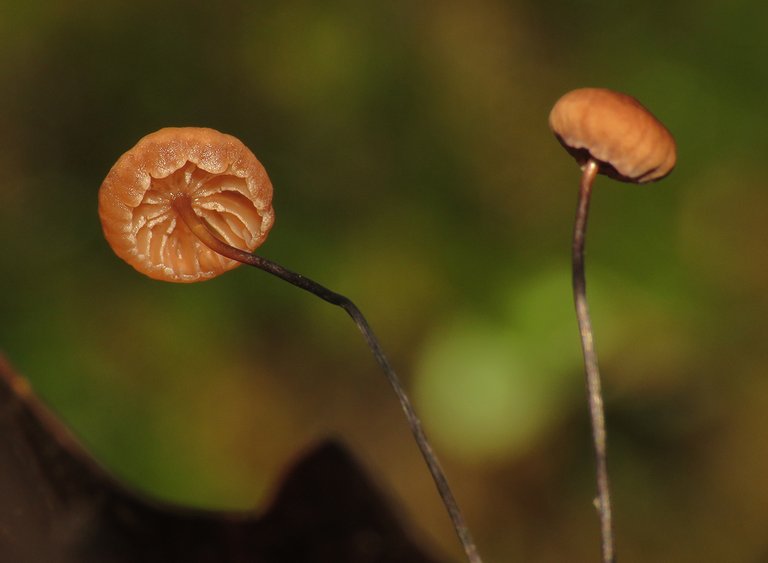
Marasmius siccus are small mushrooms that grow on rotting wood and leaf litter in deciduous forests.
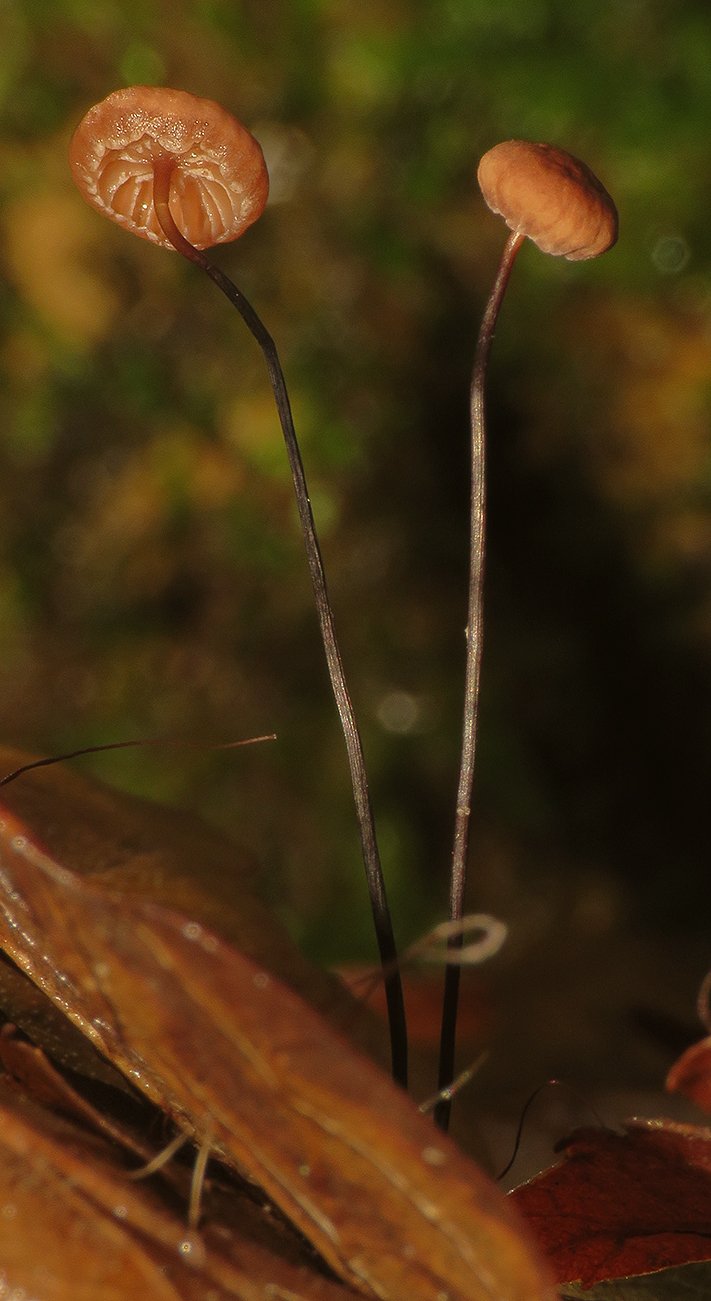
The fruiting bodies shown in this post were attached to the leaf fallen from the oak tree.
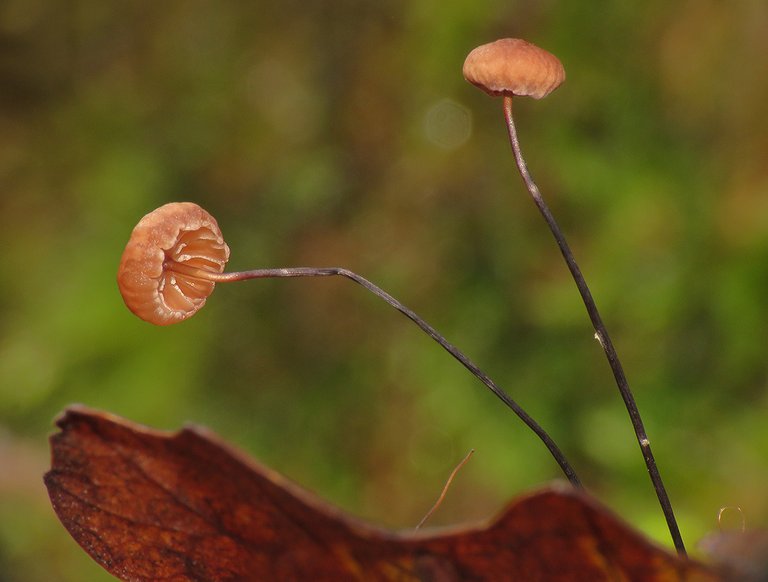
Today I found only two Marasmius siccus, but they usually appear in larger groups.
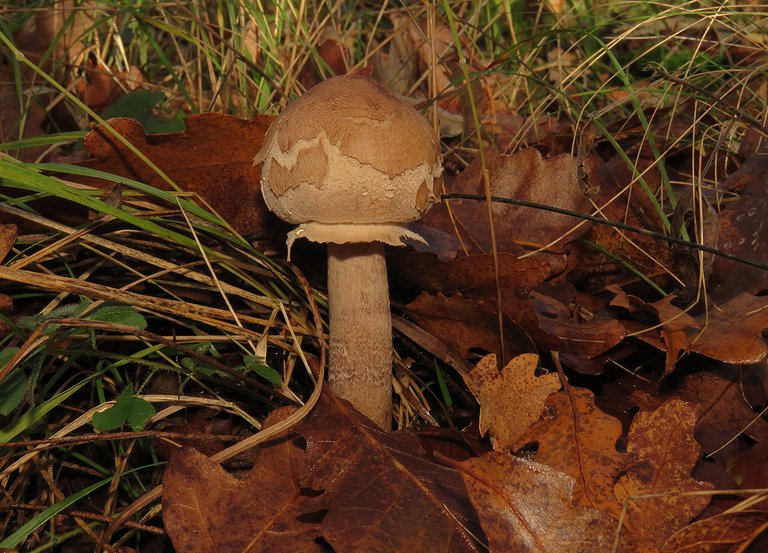
Macrolepiota procera it's a much bigger mushroom. One of the biggest in this area.
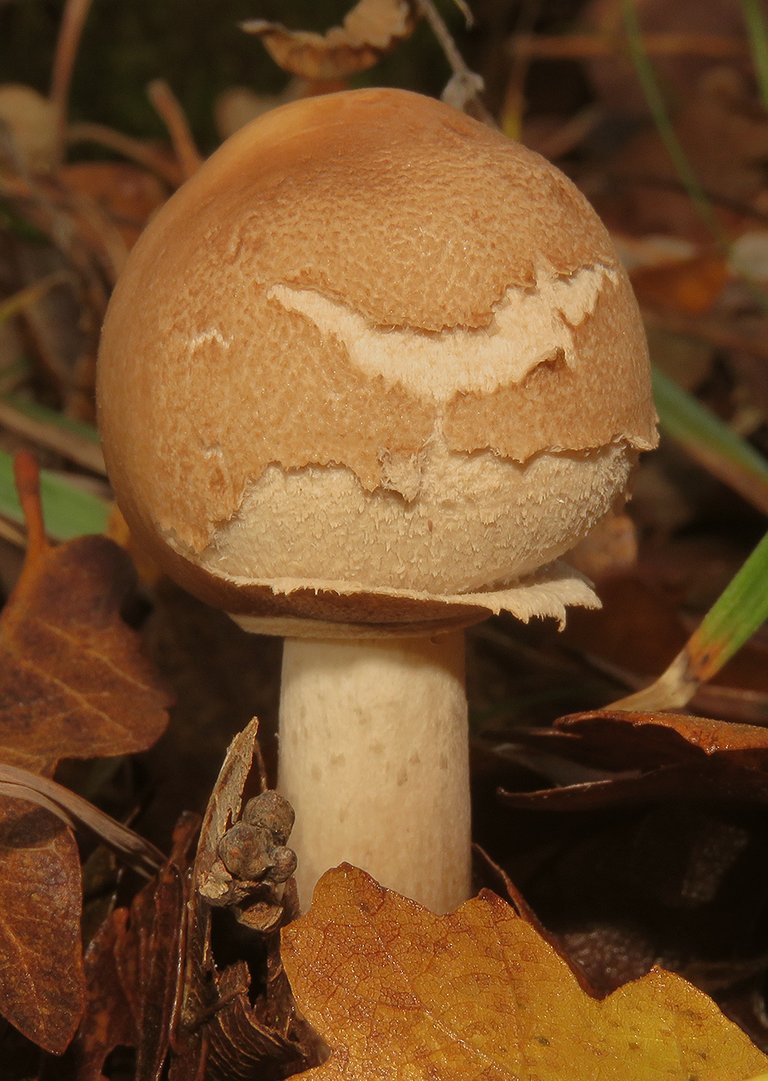
Today I found only a couple of relatively small, not completely developed fruiting bodies.
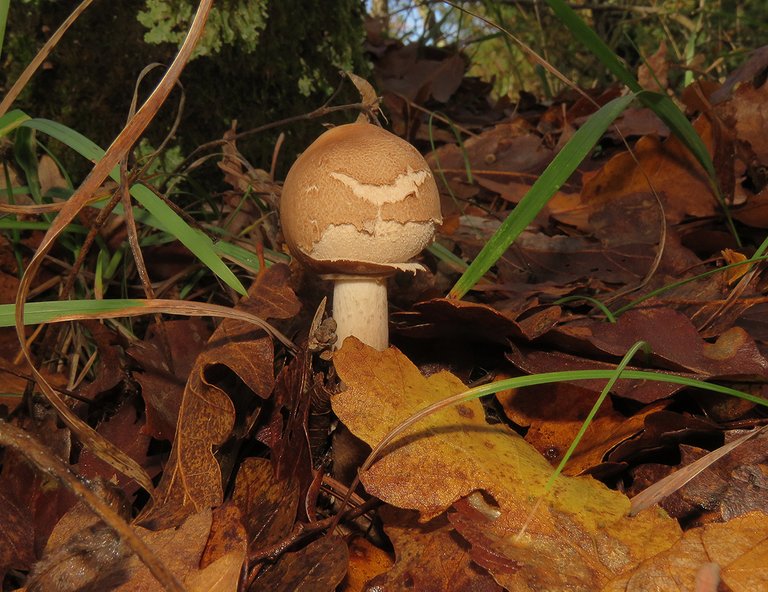
This species is commonly known as the Parasol mushroom.
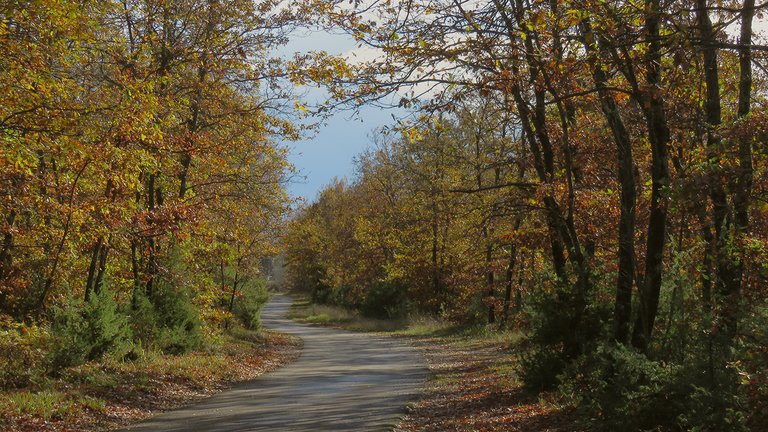
After some more walking along the country lane that leads through the woods and passes by a series of farms and villages ...
... I came across this Mycena pura mushroom.

On my way back to the car ...
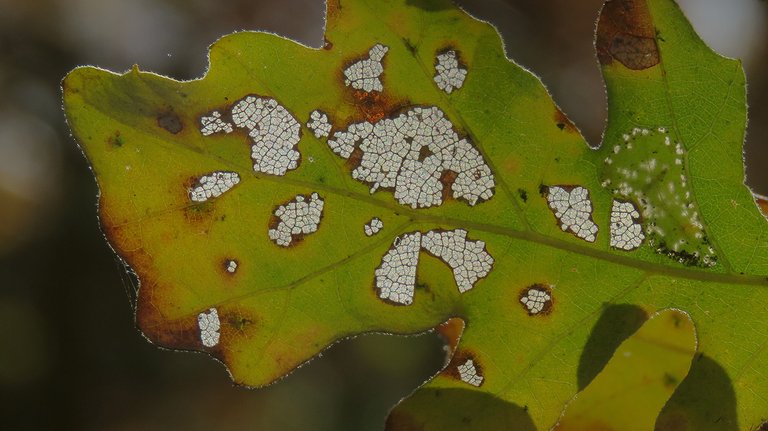
... I photographed this still green and partially transparent leaf ...
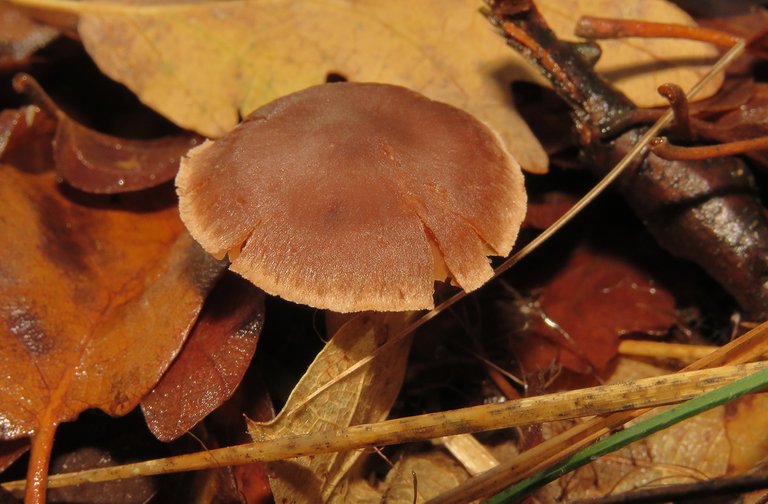
... and this small, brown mushroom that I wasn't able to identify.
And that's all. As always in these posts on HIVE, the photographs are my work - THE END.
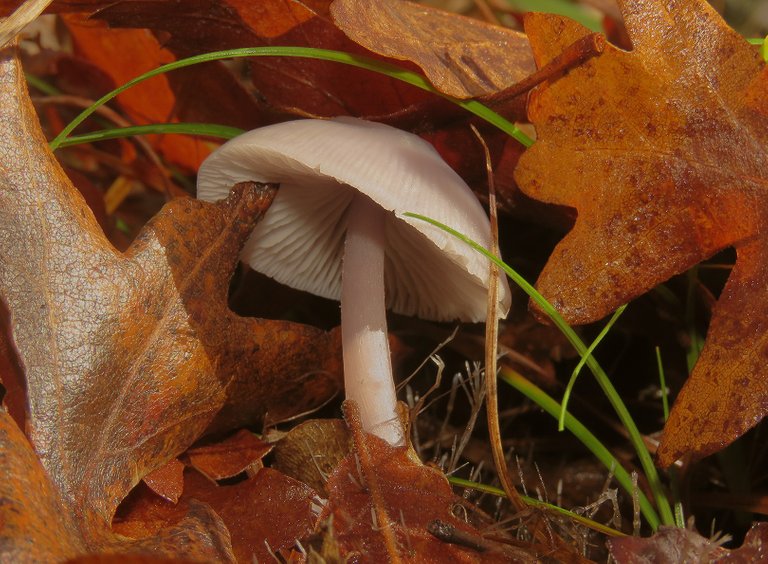
Wow I love every part of this, it looks beautiful.
Thank you :)
Extra macro details of mushrooms ;))
I like the ones with thin legs that Marasmius siccus look like dried flowers ;))
Your content has been voted as a part of Encouragement program. Keep up the good work!
Use Ecency daily to boost your growth on platform!
Support Ecency
Vote for new Proposal
Delegate HP and earn more
This mushroom has a stem that is almost the same as hair
True. :) Good observation.
I've seen this mushroom several times
That lichen is interesting.
I always like the really small mushrooms with the spindly stems. They have a surreal, Salvador Dali-like quality to them
True :) those stems look a lot like the legs of surreal Dali's creatures ... or some tree-like distant objects.
I am very interested in this mushroom, because the color of the stem and the hat is very different so it looks beautiful
very detailed macro photos, so it is very easy to recognize the media you are shooting
heeeemmm, the way to take pictures is quite detailed, the macros are very clear, thank you my friend for sharing
The weather in your area like our mid-autumn. Can't call it winter.)
True :) it's short and mild, more like autumn. In January looks a bit more appropriate, but then at the end of February first signs of spring start to appear.
The mushroom in the opening photo looks like a lantern and I'm so blown away 😍👏
By the way I also shared 31 photos of mushrooms today 😉🤝
Congratulations @borjan! You have completed the following achievement on the Hive blockchain and have been rewarded with new badge(s):
Your next target is to reach 23000 upvotes.
You can view your badges on your board and compare yourself to others in the Ranking
If you no longer want to receive notifications, reply to this comment with the word
STOPTo support your work, I also upvoted your post!
Good photo macro, l like small Maramius
There are still many mushrooms around. I have seen one the other day on the beach in Mareda.
Cool. :) Fortunately, the season isn't over. It ended up being slightly better than the start was suggesting.
It's amazing nature. I love the pictures of Marasmius siccus best. Thank you for sharing your photos. 😊
:)
This is really cool.
You showed a very extraordinary mushroom.
Very nice your picture
great effort and beautiful photos... congratulations.